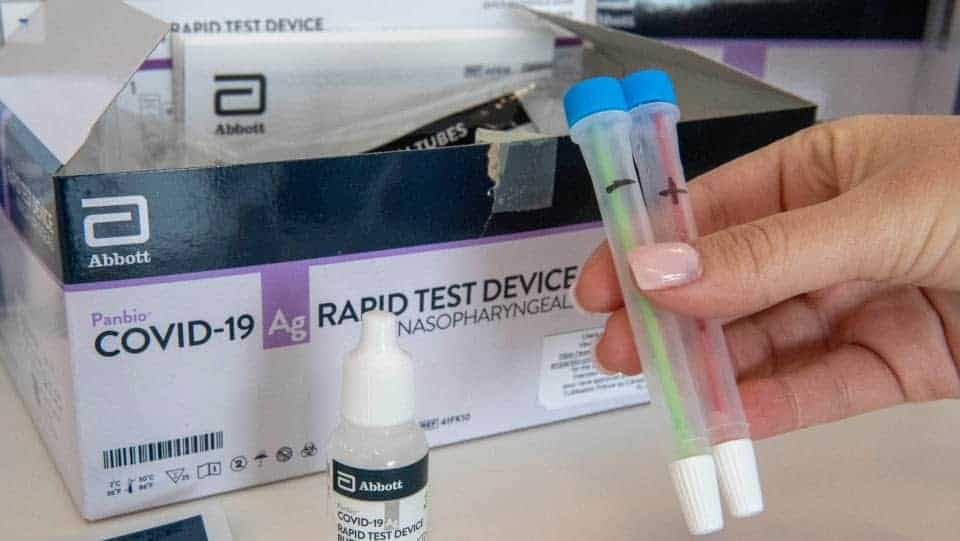

The two pilot schools were in different school districts in San Diego County (population 3.38 million).

10 As for advocacy, these school districts partnered with Public Health Services (PHS) departments, County of San Diego, Health and Human Services Agency, as well as the California State Department of Public Health (CDPH). This policy and practice description shares the experience of two San Diego County socio‐economically diverse school districts with pilot‐testing a rapid antigen test (BinaxNOW™ card system) amongst students and staff from December 2020 to May 2021. Even with rapid COVID‐19 test turnaround times, this often results in several days absence from in‐class instruction along with locating at‐home supervision for an elementary school child with employed parents/caregivers. Parents/caretakers may then be required to obtain medical clearance from a health care provider or a negative laboratory test to confirm no detectable COVID‐19 virus is present for the child to return to class in the less than 10‐day isolation period that was in effect at the time. A significant challenge exists for school nurses on returning a child with the mild symptoms (ie, headache, nausea) that may be related to non‐COVID‐19 viral infections to the classroom or calling the parent/caretaker that is likely required to leave employment to return the child to home. Many COVID‐19 infected children have minimal symptoms or have common childhood illness symptoms that overlap with COVID‐19 infection. Unvaccinated asymptomatic and pre‐symptomatic persons with COVID‐19 infection are highly capable of transmitting the virus, including at the elementary school level. Pilot development of in school rapid antigen testing in two diverse San Diego County Public Schools was the focus of this project. Laboratory costs, inclusive of test kits, reagents, and laboratory staff expenses are compounded with personnel costs of obtaining parental permission, staff training, test conduction, and implementation of isolation, and quarantine policies for those who test positive, and results reporting to parents and Public Health Departments. Multiple challenges exist for school systems implementing weekly screening testing, especially those that are chronically underfunded, and/or serve lower socioeconomic students. Ongoing support of community leaders and parents for testing as well as coordinated guidance and resources from state and local public health authorities is essential for success. 7, 8, 9, 10, 11 While COVID‐19 vaccination remains a cornerstone of intervention and rapid antigen home testing for COVID‐19 is now possible with less institutional expense, routine testing (especially for close contact athletic teams) can be highly effective at reducing within‐school COVID‐19 transmission. Multiple publications on rapid antigen K‐12 school testing exist that support the efficacy of this mitigation strategy.

The process is shared as an example for the implementation of onsite rapid antigen testing. The first COVID‐19 vaccine for students 16 years and older became available in December 2020 when Pfizer‐BioNTech COVID‐19 received FDA Emergency Use Authorization. School opening guidance from the American Academy of Pediatrics in June 2020 stated, “all policy considerations for the coming school year should start with a goal of having students physically present in school.” 5 In this time without vaccine, testing for asymptomatic COVID‐19‐infected children in the K‐12 classroom environment with subsequent isolation of the infected student and quarantine of exposed students/staff was a significant public health intervention. Only essential service workers (ie, grocery stores, health care) were allowed to engage in on‐site employment, specifically bars, indoor dining, and entertainment venues were closed. 4 Online web‐based home instruction was rapidly implemented. Over a 10‐day period in March 2020, all 50 states closed kindergarten-grade 12 schools and childcare centers along with nearly all colleges and universities. 2, 3 At a time with no vaccination or therapeutic capabilities against the virus, multiple nonpharmaceutical interventions were implemented. 1 The World Health Organization (WHO) declared a public health emergency in January 2020 and on March 13, 2020, the President of the United States declared the outbreak a public health national emergency retroactive to 1 March 2020. Scientific evidence is highly supportive that SARS‐CoV‐2 (COVID‐19 virus) transferred to humans from animals sold at a Wuhan China market in the November–December 2019 time.


 0 kommentar(er)
0 kommentar(er)
